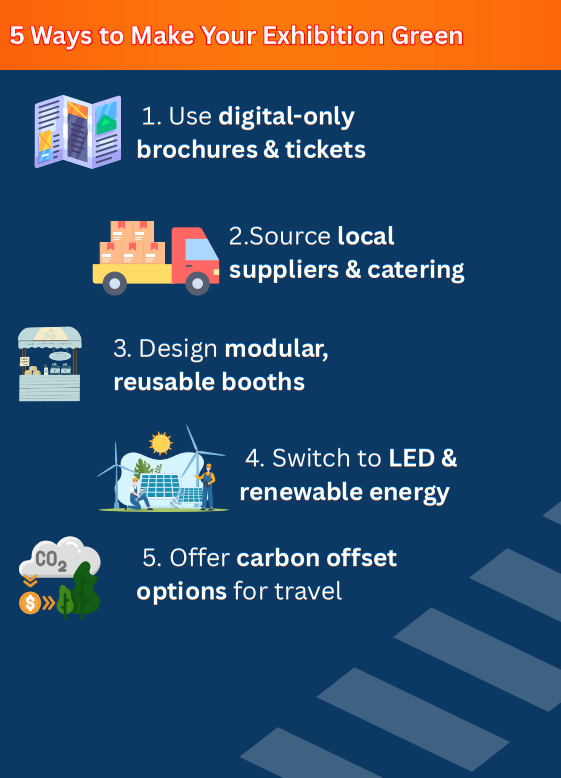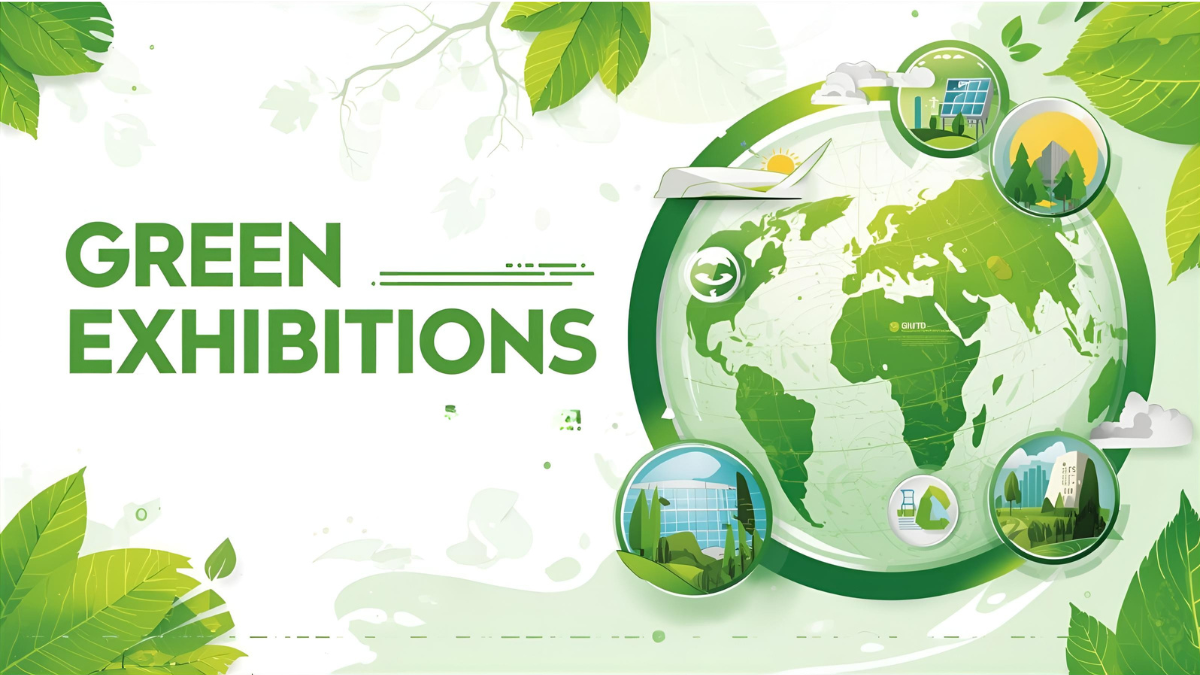In the past decade, the exhibition industry has undergone a transformation—but none as significant as its pivot towards sustainability. What was once a “nice-to-have” is now a non-negotiable standard, driven by rising environmental concerns, government regulations, and the expectations of eco-conscious exhibitors and attendees. From solar-powered venues in Europe to zero-plastic trade shows in Asia and carbon-offset programs in the Middle East, sustainability is no longer a trend—it’s the very future of global exhibitions.
♻️ Why Sustainability Matters in Exhibitions
Exhibitions are high-impact events. They bring together thousands of visitors, exhibitors, and suppliers, but with that comes massive energy use, plastic waste, food wastage, and carbon emissions from travel.
According to the Global Association of the Exhibition Industry (UFI), a large international event can generate more than 500 tons of waste in a few days. Today, organizers are reimagining operations to minimize this footprint.
Key Drivers Behind the Green Shift:
- Pressure from governments to meet carbon neutrality targets
- Growing investor interest in ESG (Environmental, Social, Governance) complianc
- Demands from Gen Z and millennial audiences who prefer responsible brands
- Cost savings from energy efficiency and waste reduction
Comparative insights into three boom
1. Eco-Friendly Venues
Modern exhibition centers are designed with energy-efficient HVAC systems, solar rooftops, rainwater harvesting, and LED lighting. For instance, Dubai World Trade Centre has adopted renewable energy solutions, while Messe München in Germany is powered significantly by solar
2. Digital-First Experiences
Hybrid exhibitions are reducing unnecessary travel by allowing virtual participation. Organizers are also digitizing catalogues, brochures, and tickets, cutting down paper waste.
“The greenest page is the one never printed.”
3. Sustainable Booth Designs
Exhibitors are ditching single-use plastics and opting for modular, reusable booth structures made of recycled wood, aluminum, and fabrics. Many are even incorporating biodegradable materials.
4. Zero-Waste Policies
Food and catering services are switching to locally sourced menus, compostable cutlery, and surplus redistribution programs to NGOs. Leftover carpets, banners, and props are being recycled or donated.
5. Carbon Offsetting & Green Travel
Organizers are introducing carbon calculators for attendees to measure and offset their event travel emissions. Some shows even encourage public transport incentives or collaborate with airlines offering sustainable aviation fuel (SAF).
🌱 Industry Case Studies
- COP28 UAE: A climate-focused mega event, COP28 integrated sustainability in every aspect —from solar-powered pavilions to zero-waste policies.
- Expo 2020 Dubai: Built on principles of sustainability, the venue included water recycling, energy-efficient tech, and post-event plans to repurpose buildings.
- IMEX Frankfurt: Known for its Sustainability Pledge, IMEX has set benchmarks by banning single-use plastics and introducing a paperless event model.
🔮 The Road Ahead
The future of exhibitions lies in embedding sustainability at every step:
✔ Carbon-neutral venues as a baseline
✔ AI-powered energy management systems
✔ Wider use of biodegradable materials
✔ Global adoption of sustainability certification for events
👉Exhibitions that fail to adapt will face reputational risks and may even lose exhibitors to greener competitors.
- Sustainability is no longer a checkbox—it’s a contract with the future.
- From venue design to waste disposal, every decision must now have an eco-lens.
- Green exhibitions don’t just save the planet—they save costs and attract next-gen audiences.









